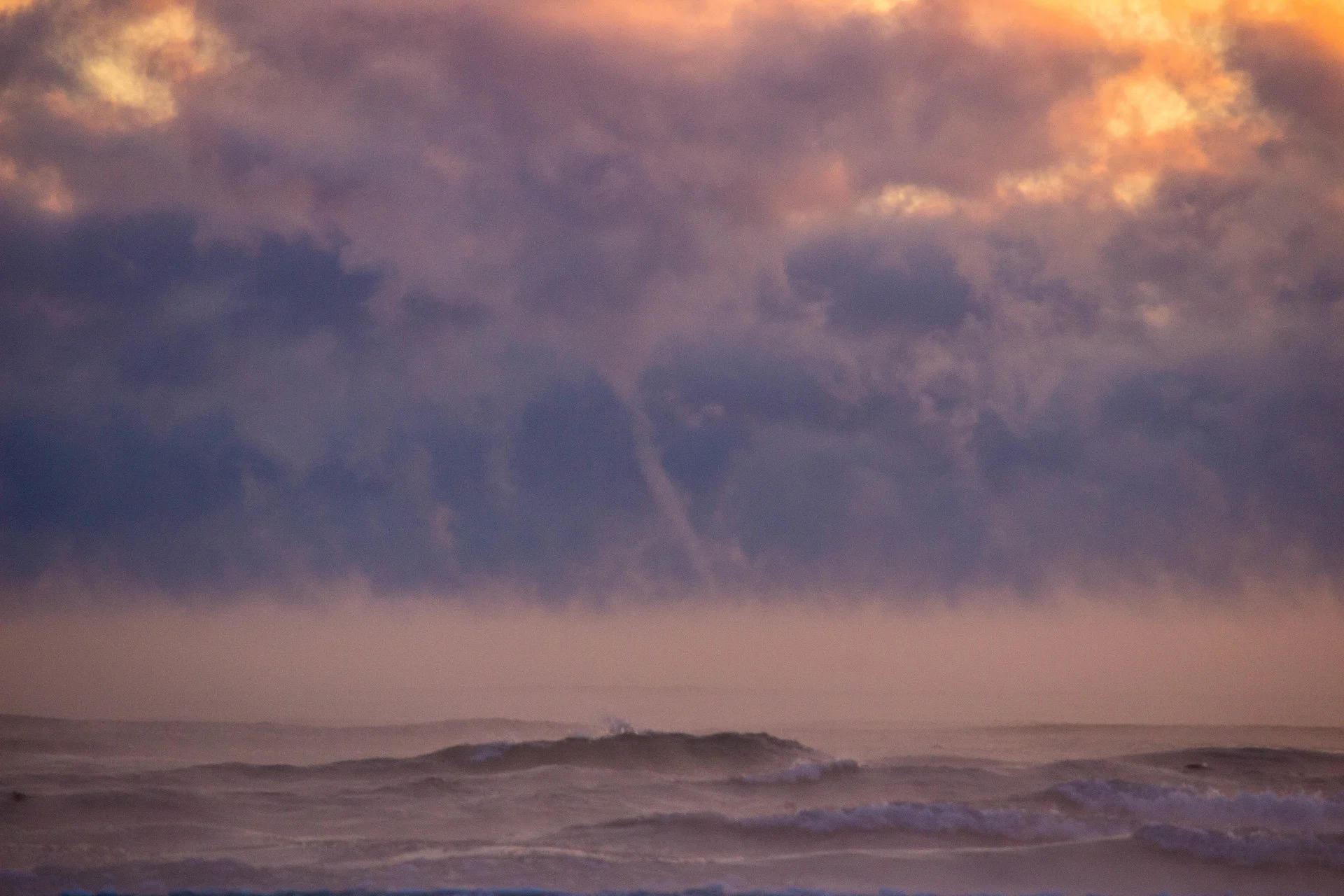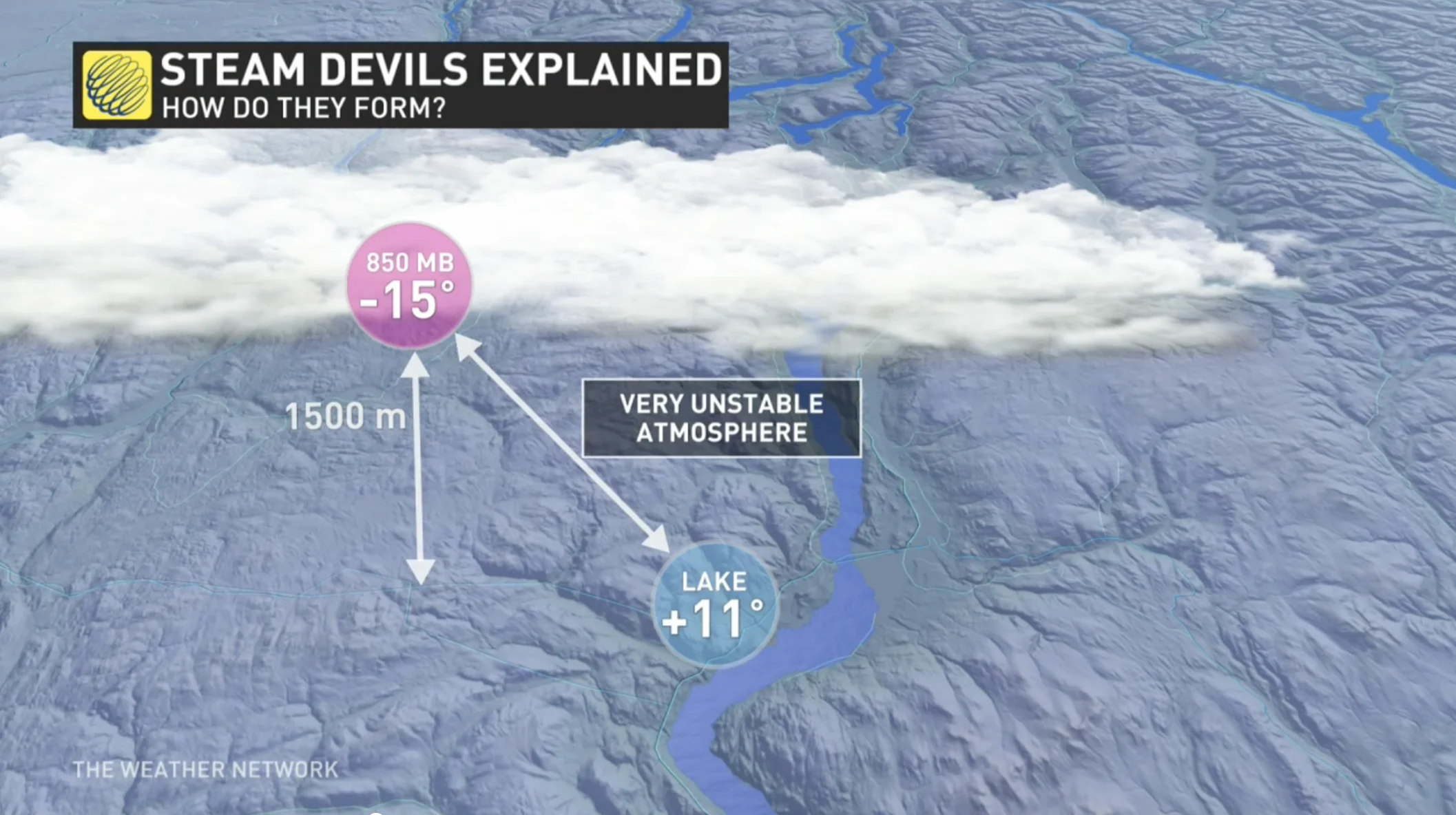
'Mini tornadoes': The difference between steam, snow, and dust devils
On January 12, when folks caught sight of a towering plume of steam above Okanagan Lake, their initial thought was a tornado! However, it turned out to be something far less daunting and quite uncommon.
As the cold, Canadian winter air continues to loom over the country, people in the most frigid parts of the country may see something that will have them rubbing their eyes in disbelief: mini tornado-like whirlwinds.
This is exactly what folks thought they saw in British Columbia on Jan. 12, 2024, when a column of condensation formed over Okanagan Lake.

A steam devil on Okanagan Lake, B.C. Taken Jan. 12, 2024. (Wilbur Force/Submitted)
No, these aren’t actual tornadoes. Real tornadoes typically form from thunderstorms creating a violent column of rapidly rotating air.
RELATED: What's behind this perfect steam devil spotted in B.C.?
During our frosty Canadian winters, you are more likely to catch a glimpse of the phenomenon known as a "steam devil," according to meteorologists.
Steam devils usually form over warm open waters, such as the Great Lakes, but they have also been known to occasionally form on land, too.
They are very similar to 'snownadoes' and dust devils, in fact – just a different is element being whirled upwards.
Where they differ, however, is in formation conditions.

Steam devils form from, you guessed it, steam. Therefore, there needs to be a body of water that is significantly warmer than the air above it. The body of water also needs to be open enough to allow for air circulation at the surface.
DON'T MISS: Fantastic clouds, their significance, and where to find them
The 2023-24 winter season has been anything but ordinary. A strong El Niño made for nationally above-normal winter temperatures to kick off the season. This means that large bodies of water had a longer period to hold heat from the atmosphere.
Suddenly, like a switch, a deep freeze came about in January as a potent polar vortex descended over Western Canada. This would create a sharp difference between the warm water temperatures and the frigid air, thus resulting in large amounts of steam being produced.
When the surface of the water becomes unstable, the air can rise and rotate into a large column, resembling a tornado, but much gentler and smaller.
Snow and dust devils form similarly in that instability at the surface is needed to make the air rise aloft. However, the instability required for these whirlwinds is created over a shorter period of time from the sun heating the ground (or snow) surface.
SEE ALSO: It's not one season fits all: How winter weather varies across Canada
Snow devils are actually much rarer than dust devils due to the fine balance of temperatures involved. Too much sun would melt the snow and too cold of temperatures would keep the surface frozen.

In a similar fashion, steam devils are also much rarer than dust devils due to the large temperature difference needed to generate steam over the water.
While none of these three phenomena are particularly dangerous like their destructive cousin, the tornado, it’s still advised to not get too close to one as they can still be quite menacing to witness.
Have you seen these neat whirlwinds? Share your photos with us, here! We’d love to see them!
With files from CBC News.
Thumbnail photo of a steam devil over Lake Ontario, taken in Brighton on Jan. 6, 2018, submitted by Chris Knox.











